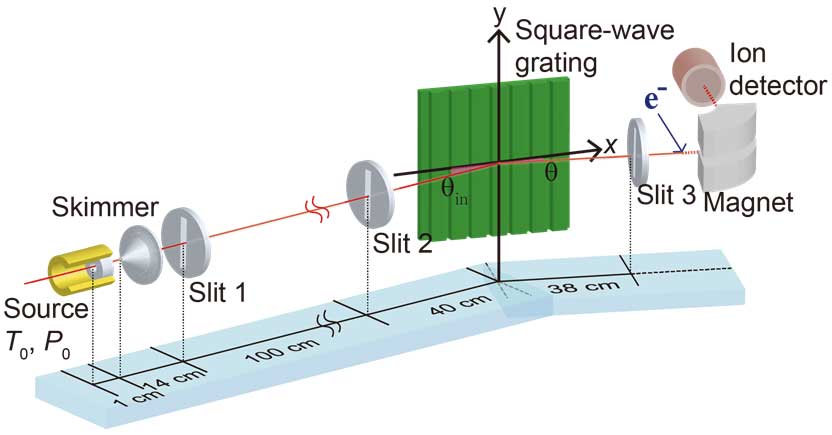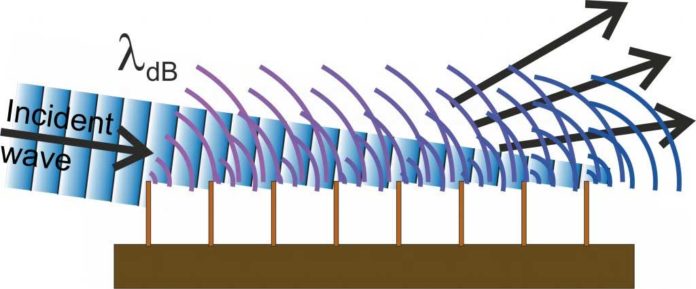Sometimes, there is a negligible form of energy exists between the particles to emit a tremendous influence throughout. Such kind of forces that rules interactions between particles and physical entities have a lack of comprehension.
In the latest study, UNIST scientists have introduced a solid platform to better understand dispersive interaction by verifying a new mechanism for matter-wave diffraction. They are developing a method to quantify the dispersive interaction through the verification of the new matter-wave diffraction mechanism, occurred in square-wave gratings with narrower stripe widths.
For the measurement, scientists created a plate with protruding squares. They shot a wave of helium (He) or deuterium (D2) with a square of 400 micrometers. The material wave was incident in a direction almost parallel to the diffraction plate.
Lee Yeong Kim in the Combined M.S/Ph.D. in Physics at UNIST said, “We have experimented with a square wave plate with a square line width reduced from 200 micrometers (㎛, 1 ㎛ is 1m 1m) to 10 ㎛. As the line width decreases, the result of the reflection of the material wave is closer to the theoretical value of the periodic semi-planar aggregate.”

A half plane refers to one side of an infinite plane cut into two straight lines. In optics, this ideal structure is used as a basic model to explain diffraction phenomena. When these half-planes appear periodically, they become periodic semi-planar assemblies, and the theory about the diffraction that takes place here is already known. In this study, scientists primarily established this theory in wave-wave optics, thereby laying the foundation for measuring the scattering interactions with the wave.
Professor Bum Suk Zhao in the School of Natural Science at UNIST said, “Our data provide experimental confirmation of the widespread model. Moreover, our results demonstrate that neither classical reflection nor quantum reflection is essential for reflective diffraction of matter waves from a structured solid, but it can result exclusively from half-plane edge diffraction.”
The team carried out the experiments, using the grazing incidence matter-wave optical device from the Fritz Haber Institute of the Max Planck Association in Germany. This study has been supported by the Basic Science Research Program through the National Research Foundation of Korea (NRF) funded by the Korean Ministry of Science and ICT (MSIT).
Scientists have reported about their study in the journal Phys. Rev. Lett.
